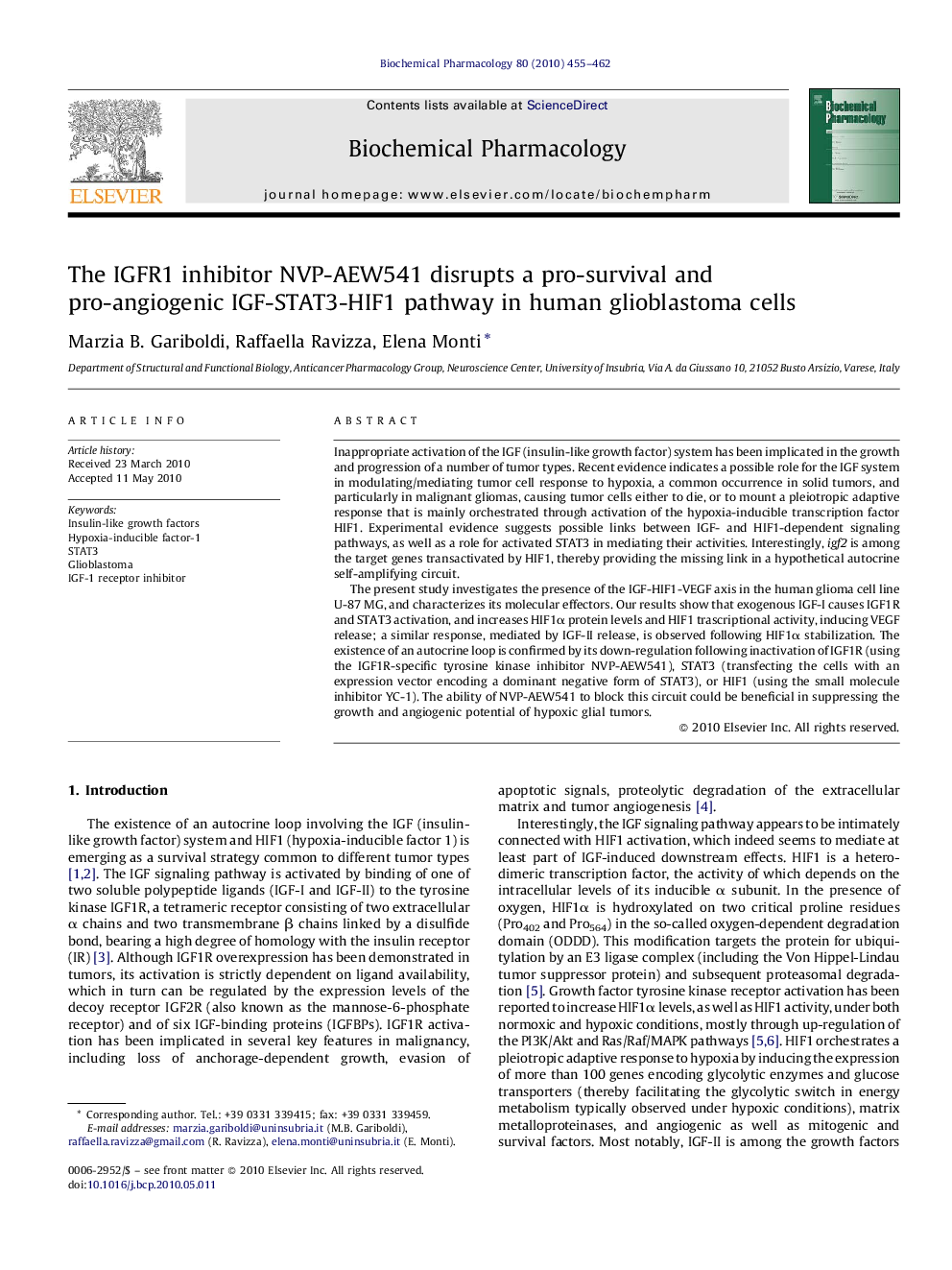| Article ID | Journal | Published Year | Pages | File Type |
|---|---|---|---|---|
| 2513391 | Biochemical Pharmacology | 2010 | 8 Pages |
Inappropriate activation of the IGF (insulin-like growth factor) system has been implicated in the growth and progression of a number of tumor types. Recent evidence indicates a possible role for the IGF system in modulating/mediating tumor cell response to hypoxia, a common occurrence in solid tumors, and particularly in malignant gliomas, causing tumor cells either to die, or to mount a pleiotropic adaptive response that is mainly orchestrated through activation of the hypoxia-inducible transcription factor HIF1. Experimental evidence suggests possible links between IGF- and HIF1-dependent signaling pathways, as well as a role for activated STAT3 in mediating their activities. Interestingly, igf2 is among the target genes transactivated by HIF1, thereby providing the missing link in a hypothetical autocrine self-amplifying circuit.The present study investigates the presence of the IGF-HIF1-VEGF axis in the human glioma cell line U-87 MG, and characterizes its molecular effectors. Our results show that exogenous IGF-I causes IGF1R and STAT3 activation, and increases HIF1α protein levels and HIF1 trascriptional activity, inducing VEGF release; a similar response, mediated by IGF-II release, is observed following HIF1α stabilization. The existence of an autocrine loop is confirmed by its down-regulation following inactivation of IGF1R (using the IGF1R-specific tyrosine kinase inhibitor NVP-AEW541), STAT3 (transfecting the cells with an expression vector encoding a dominant negative form of STAT3), or HIF1 (using the small molecule inhibitor YC-1). The ability of NVP-AEW541 to block this circuit could be beneficial in suppressing the growth and angiogenic potential of hypoxic glial tumors.
Graphical abstractAn autocrine circuit, involving IGF1R, STAT3, HIF1α and IGF-II operates in human glioblastoma cells.Figure optionsDownload full-size imageDownload as PowerPoint slide
